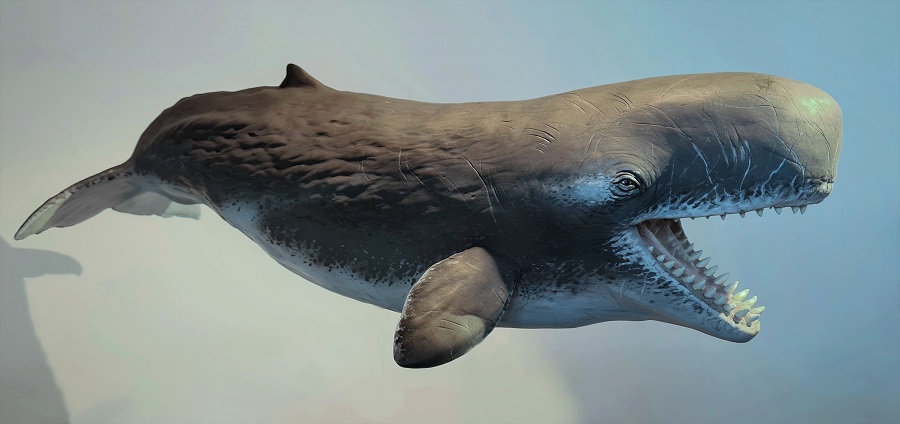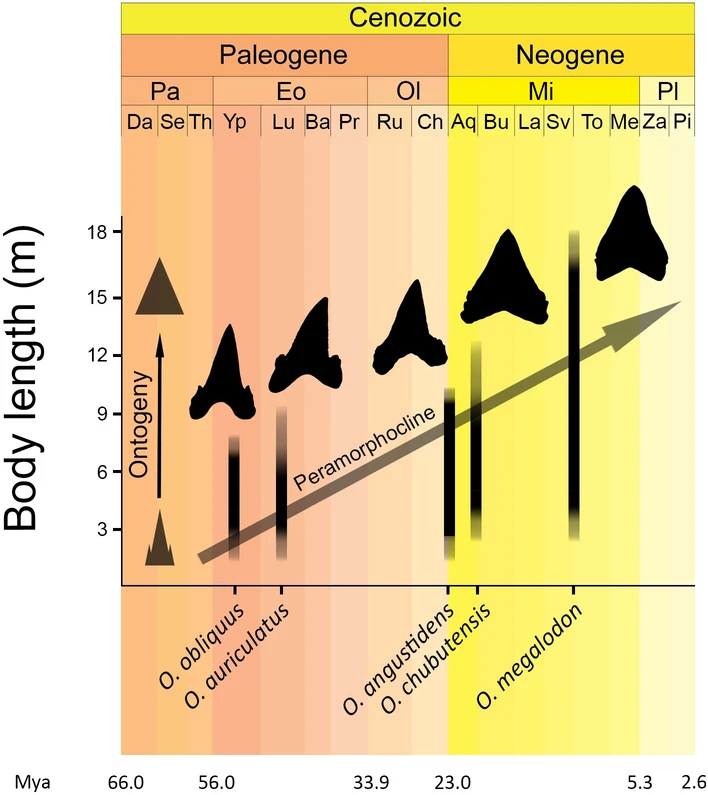|
Cetotherium
''Cetotherium'' ("whale beast") is an extinct genus of baleen whales from the family Cetotheriidae. Taxonomy The family Cetotheriidae and the genus ''Cetotherium'' (sensu lato) have been used as wastebaskets for all kinds of baleen whales, most notably by , Spassky (1954) and . Based on more recent phylogenetic studies and revisions of many 19th century genera, much smaller monophyletic Cetotheriidae and ''Cetotherium'' sensu stricto is limited to a single or only a few species. For example, included only ''C. rathkii'' and ''C. riabinini'' in the genus and only ten genera in the family. Cetotheriidae were thought to have gone extinct during the Pliocene until 2012, when it was hypothesized that the pygmy right whale was the sole surviving species of this family. Formerly assigned to ''Cetotherium'' The following species were originally described as nominal species of ''Cetotherium'' but have been either reassigned to other genera or removed from ''Cetotherium'': * ''Cetot ... [...More Info...] [...Related Items...] OR: [Wikipedia] [Google] [Baidu] |
Cetotheriidae
Cetotheriidae is a family of baleen whales (parvorder Mysticeti). The family is known to have existed from the Late Oligocene to the Early Pleistocene before going extinct. Although some phylogenetic studies conducted by recovered the living pygmy right whale as a member of Cetotheriidae, making the pygmy right whale the only living cetotheriid, other authors either dispute this placement or recover Neobalaenidae as a sister group to Cetotheriidae. Taxonomy After its description by Brant in 1872, Cetotheriidae was used as a wastebasket taxon for baleen whales which were not assignable to extant whale families. Comparing the cranial and mandibular morphology of 23 taxa (including late archaeocetes and both fossil and extant mysticetes), found Cetotheriidae in this traditional sense to be polyphyletic. Based on ten cranial characters, they also concluded that of the twelve included fossil baleen-bearing mysticetes, six formed a monophyletic group, Cetotheriidae ''sensu stricto' ... [...More Info...] [...Related Items...] OR: [Wikipedia] [Google] [Baidu] |
Eschrichtioides
''Eschrichtioides'' is an extinct genus of baleen whale known from the early Pliocene of Northern Italy. Its type species, ''E. gastaldii'', had a complex taxonomic history, starting as a cetothere, then as an extinct member of '' Balaenoptera'', before being finally recognized as a relative of the gray whale. Distribution ''Eschrichtioides'' is one of two '' Eschrichtius'' relatives known from the Neogene of Italy, the other being '' Archaeschrichtius''. Its holotype, MRSN 13802, comes from the early Pliocene-age Sabbie d'Asti Formation of the Piedmont region in Italy and it is currently exposed in Asti's paleontological museum "Museo Paleontologico Territoriale dell'Astigiano". Classification Like other cetaceans from the Italian Pliocene, the classification of ''Eschrichtioides'' was highly contentious. described several species of '' Cetotherium'' from the Pliocene of northern Italy, including ''C. cortesi'' based on a specimen ( MSRN 13802) found by Italian geolo ... [...More Info...] [...Related Items...] OR: [Wikipedia] [Google] [Baidu] |
Eschrichtiidae
Eschrichtiidae or the gray whales is a family (taxonomy), family of baleen whale (Parvorder Mysticeti) with a single extant species, the gray whale (''Eschrichtius robustus''), as well as four described fossil genera: ''Archaeschrichtius'' (Miocene), ''Glaucobalaena'' and ''Eschrichtioides'' (Pliocene) from Italy, and ''Gricetoides'' from the Pliocene of North Carolina. Some phylogenetic studies have found this family to be invalid, with its members nesting inside of the clade Rorqual, Balaenopteridae. The names of the extant genus and the family honours Danish zoologist Daniel Eschricht. Taxonomy In his morphological analysis, found that eschrichtiids and Cetotheriidae (''Cetotherium'', ''Mixocetus'' and ''Metopocetus'') form a monophyletic sister group of Balaenopteridae. A specimen from the Late Pliocene of Northern Italy, named ''"Cetotherium" gastaldii'' by and renamed ''"Balaenoptera" gastaldii'' by , was identified as a basal eschrichtiid by who recombined it to ''Eschr ... [...More Info...] [...Related Items...] OR: [Wikipedia] [Google] [Baidu] |
Baleen Whales
Baleen whales (), also known as whalebone whales, are marine mammals of the order (biology), parvorder Mysticeti in the infraorder Cetacea (whales, dolphins and porpoises), which use baleen plates (or "whalebone") in their mouths to sieve plankton from the water. Mysticeti comprises the family (biology), families Balaenidae (right whale, right and Bowhead whale, bowhead whales), Balaenopteridae (rorquals), Eschrichtiidae (the gray whale) and Cetotheriidae (the pygmy right whale). There are currently 16 species of baleen whales. While cetaceans were historically thought to have descended from Mesonychia, mesonychians, molecular phylogenetics, molecular evidence instead supports them as a clade of even-toed ungulates (Artiodactyla). Baleen whales split from toothed whales (Odontoceti) around 34 mya (unit), million years ago. Baleen whales range in size from the and pygmy right whale to the and blue whale, the Largest organisms, largest known animal to have ever existed. They ar ... [...More Info...] [...Related Items...] OR: [Wikipedia] [Google] [Baidu] |
Evolution Of Cetaceans
The evolution of cetaceans is thought to have begun in the Indian subcontinent from even-toed ungulates (Artiodactyla) 50 million years ago (mya) and to have proceeded over a period of at least 15 million years. Cetaceans are fully aquatic mammals belonging to the order Artiodactyla and branched off from other artiodactyls around 50 Year#Abbreviations yr and ya, mya. Cetaceans are thought to have evolved during the Eocene (56-34 mya), the second epoch of the present-extending Cenozoic Era. Molecular and morphological analyses suggest Cetacea share a relatively recent closest common ancestor with hippopotamus, hippopotamuses and that they are sister groups. Being mammals, they surface to breathe air; they have five finger bones (even-toed) in their fins; they nurse their young; and, despite their fully aquatic life style, they retain many skeletal features from their terrestrial ancestors.Thewissen, J. G. M., L. N. Cooper, J. C. George, and S. Bajpai. 2009. From land to wa ... [...More Info...] [...Related Items...] OR: [Wikipedia] [Google] [Baidu] |
Mithridatocetus
''Mithridatocetus'' is a genus of cetotheriid mysticete in the subfamily Cetotheriinae. Known specimens have been found in marine deposits in Crimea, Ukraine Ukraine is a country in Eastern Europe. It is the List of European countries by area, second-largest country in Europe after Russia, which Russia–Ukraine border, borders it to the east and northeast. Ukraine also borders Belarus to the nor ..., and the Russian Caucasus.P. Goldin and D. Startsev. 2016. "A systematic review of cetothere baleen whales (Cetacea, Cetotheriidae) from the Late Miocene of Crimea and Caucasus, with a new genus". ''Papers in Palaeontology''. References Cetotheriidae Prehistoric cetacean genera Miocene cetaceans Miocene mammals of Europe Fossils of Russia Fossil taxa described in 2016 {{paleo-whale-stub ... [...More Info...] [...Related Items...] OR: [Wikipedia] [Google] [Baidu] |
Livyatan Melvillei
''Livyatan'' is an extinct genus of macroraptorial sperm whale containing one known species: ''L. melvillei''. The genus name was inspired by the biblical sea monster Leviathan, and the species name by Herman Melville, the author of the famous novel ''Moby-Dick'' about a white bull sperm whale. Herman Melville often referred to whales as "Leviathans" in his book. It is mainly known from the Pisco Formation of Peru during the Tortonian stage of the Miocene epoch, about 9.9–8.9 million years ago (mya); however, finds of isolated teeth from other locations such as Chile, Argentina, the United States (California), South Africa and Australia imply that either it or a close relative survived into the Pliocene, around 5mya, and may have had a global presence. It was a member of a group of macroraptorial sperm whales (or "raptorial sperm whales") and was probably an apex predator, preying on whales, seals and so forth. Characteristically of raptorial sperm whales, ''Livyatan'' had fun ... [...More Info...] [...Related Items...] OR: [Wikipedia] [Google] [Baidu] |
Kurdalagonus
''Kurdalagonus'' is a genus of cetotheriid mysticete in the subfamily Cetotheriinae from the Miocene of the Russian Caucasus. ''"Kurdalagonus" adygeicus'' has been reassigned to ''Mithridatocetus'', while the referral of ''"Cetotherium ''Cetotherium'' ("whale beast") is an extinct genus of baleen whales from the family Cetotheriidae. Taxonomy The family Cetotheriidae and the genus ''Cetotherium'' (sensu lato) have been used as wastebaskets for all kinds of baleen whales, mo ..." maicopicum'' to ''Kurdalagonus'' has been questioned.P. Goldin and D. Startsev. 2016. "A systematic review of cetothere baleen whales (Cetacea, Cetotheriidae) from the Late Miocene of Crimea and Caucasus, with a new genus". ''Papers in Palaeontology''. References {{Taxonbar, from=Q28432433 Cetotheriidae Miocene cetaceans Prehistoric cetacean genera Fossil taxa described in 2012 Miocene mammals of Europe ... [...More Info...] [...Related Items...] OR: [Wikipedia] [Google] [Baidu] |
Toothed Whale
The toothed whales (also called odontocetes, systematic name Odontoceti) are a parvorder of cetaceans that includes dolphins, porpoises, and all other whales with teeth, such as beaked whales and the sperm whales. 73 species of toothed whales are described. They are one of two living groups of cetaceans, the other being the baleen whales (Mysticeti), which have baleen instead of teeth. The two groups are thought to have diverged around 34 million years ago (mya). Toothed whales range in size from the and vaquita to the and sperm whale. Several species of odontocetes exhibit sexual dimorphism, in that there are size or other morphological differences between females and males. They have streamlined bodies and two limbs that are modified into flippers. Some can travel at up to 30 knots. Odontocetes have conical teeth designed for catching fish or squid. They have well-developed hearing that is well adapted for both air and water, so much so that some can survive even i ... [...More Info...] [...Related Items...] OR: [Wikipedia] [Google] [Baidu] |
Megalodon
''Otodus megalodon'' ( ; meaning "big tooth"), Common name, commonly known as megalodon, is an extinction, extinct species of giant mackerel shark that lived approximately 23 to 3.6 million years ago (Mya), from the Early Miocene to the Early Pliocene epochs. ''O. megalodon'' was formerly thought to be a member of the family (biology), family Lamnidae and a close relative of the great white shark (''Carcharodon carcharias''), but has been reclassified into the extinct family Otodontidae, which Speciation, diverged from the great white shark during the Early Cretaceous. While regarded as one of the largest and most powerful predators to have ever lived, megalodon is only known from fragmentary remains, and its appearance and maximum size are uncertain. Scientists have argued whether its body form was more stocky or elongated than the modern lamniform sharks. Maximum body length estimates between based on various analyses have been proposed, though the Mode (statistics), modal ... [...More Info...] [...Related Items...] OR: [Wikipedia] [Google] [Baidu] |





